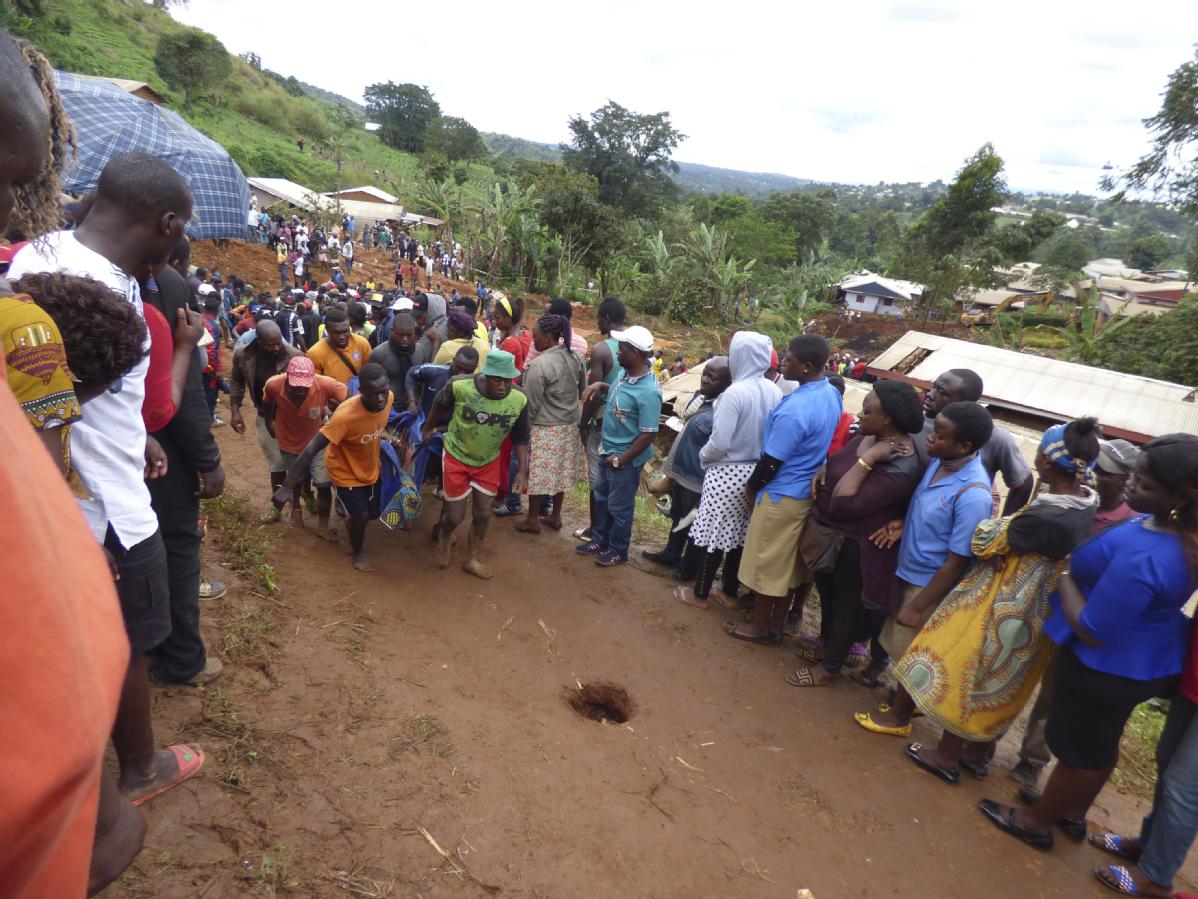42 perish in Cameroon landslide


At least 42 people were killed after their houses were swept away on Tuesday in a landslide caused by torrential rain in the western Cameroon city of Bafoussam, state media reported, showing images of rescuers desperately sifting through rubble for survivors.
"Searches are ongoing. We fear there are further deaths," a senior local official told AFP on condition of anonymity.
A total of 42 bodies were taken to the hospital in the city, according to an official statement read on Cameroon Radio Television, or CRTV.
Media reports had earlier spoken of about 30 dead, with the radio reporting that four pregnant women were among the victims.
Pictures of the tragedy in Bafouassam posted on social media showed ramshackle houses having crumbled into the ochre-colored terrain and men clad in hard hats digging away at piles of mud in the search for survivors.
Cameroon President Paul Biya offered his condolences to families of the victims in a message broadcast on CRTV.
Landslides are quite exceptional in the area although further south they are less rare in the rainy season, notably in the English-speaking southwest.
Neighboring Central African Republic, already mired in a brutal civil war, is reeling from 10 days of torrential rain which have plunged swathes of the country underwater, creating a new emergency in one of the world's poorest nations.
The region is experiencing abnormally heavy rains due to the strong positive Indian Ocean Dipole weather phenomenon, experts said.
Strong positive IOD means cooler than normal water in the east and warmer than normal water in the west, resulting in higher evaporation off the African coastline being dumped inland as rainfall.
According to the International Federation of Red Cross, by mid-October, the positive IOD index stood at more than 2 C.
This is the highest ever recorded in a season with neutral El Nino Southern Oscillation and a positive IOD. The index is notably higher than that the over 1 C recorded in 1961, which resulted in widespread flooding across east Africa.
A similar scenario recurred in 1997, when Somalia recorded 2,000 deaths, 250,000 displaced persons and 35,500 lost animals, according to a book, The East African Great Lakes: Limnology, Palaeolimnology and Biodiversity.
With this year's index being the highest ever, heavier rainfall and probably more damage are expected.
Mutai Kipkoech, a remote sensing and air pollution meteorologist, said mountainous topography, poor drainage systems and lack of an early warning system are the major causes for rain-related hazards.
"As a matter of fact, the floods reported in the urban built-up areas should strictly be referred to as "runoff", and not floods. This is because they are a sad consequence of poor urban drainage," he said.
AFP contributed to this story.

































